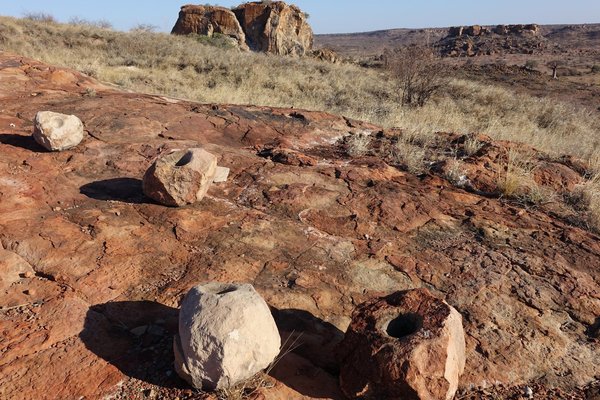South Africa
Mapungubwe
Mapungubwe Cultural Landscape covers the remains of what once was the most important inland settlement in Southern Africa.
It was the main settlement of the Kingdom of Mapungubwe, in its heydays the largest kingdom in Africa. Its inhabitants traded ivory and gold with the Swahili towns at the Indian Ocean shore from between ca. 900-1300 AD. A sacred royal leadership evolved, in which the royals came to distinguish themselves from the commoners by living in a secluded palace on Mapungubwe Hill. Mapungubwe was abandoned in the 13th century, after a sudden change in climate and/or losing its role on the trade routes.
Community Perspective: the sacred Mapungubwe Hill is only accessible on a guided tour, provided by the park office of the larger national park that it is part of. It’s worth staying a day (or two) longer to enjoy the very scenic surroundings.
Site Info
Official Information
- Full Name
- Mapungubwe Cultural Landscape (ID: 1099)
- Country
- South Africa
- Status
-
Inscribed 2003
Site history
History of Mapungubwe
- 2003: Advisory Body overruled
- ICOMOS advised Deferral, due to formal designation of the Vhembe-Dongola National Park & updated mgt plan
- 2003: Inscribed
- Inscribed
- Type
- Cultural
- Criteria
- ii
- iii
- iv
- v
Links
- UNESCO
- whc.unesco.org
- Official
-
- sanparks.org — Mapungubwe National Park
All Links
UNESCO.org
- whc.unesco.org — whc.unesco.org/
Official Website
- sanparks.org — Mapungubwe National Park
News Article
- Jan. 16, 2018 dailymaverick.co.za — Tourist anger over cattle grazing in Mapungubwe national park
- Oct. 29, 2017 zoutnet.co.za — R10 million price tag on "rain" festival raises eyebrows
- Feb. 9, 2016 sabc.co.za — Tracing dogs beef up security at National Park Mapungubwe
- July 27, 2014 enca.com — Rhino carcass discovered in Limpopo Park
- Sept. 14, 2012 southafrica.info — Mapungubwe visitor centre opens
- Feb. 25, 2009 mg.co.za — Prized world heritage site Mapungubwe, where the famous gold rhino statuette was unearthed, could soon have the scar of an open-cast coal mine on its doorstep
Community Information
- Community Category
- Cultural Landscape: Relict
Travel Information
Guided Tour Only
Recent Connections
-
Bantu peoples
Shona, Tshivhula and Venda peoples
-
African Kingdoms
Kingdom of Mapungubwe (1075 - 1220)See…
-
Guided Tour Only
Mapungubwe Hill, the main cultural focu…
Connections of Mapungubwe
- Geography
-
-
On National Border
On borders with Zimbabwe and Botswana
-
- History
-
-
Historical Food Remains
Bones and ostrich eggs -
Chinese Porcelain in Africa
"Glass beads, spindle whorls and fragments of Chinese porcelain are evidence for a flourishing trade with the east coast of Africa and, from there, with India, Indonesia and China" (Nom File) -
Located in a Former Capital
remains of three capital sites -
African Kingdoms
Kingdom of Mapungubwe (1075 - 1220)See en.wikipedia.org
-
Bantu peoples
Shona, Tshivhula and Venda peoples
-
- Ecology
-
-
Notable Trees
Giant Baobabs -
Lions
"Within the area of the Greater Mapungubwe Transfrontier Conservation Area (GMTFCA) there are approximately 70 free roaming lions." -
Ratites
common ostrich -
Elephants
The area was also prime elephant country, providing access to valuable ivory. (wiki)
-
- Architecture
- World Heritage Process
-
-
Extensions on Tentative List
Mapungubwe Cultural Landscape (Trans-boundary Listing)-Botswana -
Potential Transboundary sites
Mapungubwe Cultural Landscape (Trans-boundary Listing)
-
- WHS on Other Lists
-
-
World Biosphere Reserves
Vhembe (2009)
-
- Timeline
- Visiting conditions
-
-
Foreigner prices
48 Rand for South Africans, 96 Rand for citizens of SADC member states and 192 Rand for other foreignersSee www.sanparks.org
-
Guided Tour Only
Mapungubwe Hill, the main cultural focus of this site, can only be visited accompanied by a park guide. The surrounding park can be done by self-drive.
-
News
- dailymaverick.co.za 01/16/2018
- Tourist anger over cattle grazing …
- zoutnet.co.za 10/29/2017
- R10 million price tag on "rain" fe…
- sabc.co.za 02/09/2016
- Tracing dogs beef up security at N…
Community Reviews
Show full reviews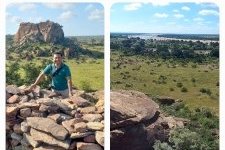
Mpungubwe is located far away along the border of South Africa with Botswana and Zimbabwe, and at one of the viewpoints you can see the convergence of the three countries. Prior to the visit, we made it a point to visit the Dzata ruins in the Southspanberg (a World Biosphere Reserve) to serve as a reference and comparison site. Its connections with Mpungubwe and Great Zimbab are quite strong and evident, and it enriches the understanding of the culture from that corner of the globe. In terms of chronology, Mpungubwe preceded Great Zimbab and Dzata came in later using stones from Zimbabwe.
We camped in Mpungubwe for two days and one night where we did a self-drive game viewing, an organized sunset safari (of which we were the only ones who availed), and a morning hike up Mpungubwe Hill. Wildlife in the park is satisfactory for me and since it is not popular for it, chances of encountering other sightseers are slimmer than other game reserves and national parks I have been to before; naturally most would opt to go to nearby Kruger. As we were driving back to Loekwe Camp on our rental car after the sunset drive, we encountered a leopard walking towards us along the dirt road not far from where we stayed. Sightings like that close to the camp had to be reported. The cabin is equipped with a stove, microwave, toaster, and a fridge, and it makes sense to take food …
Keep reading 0 comments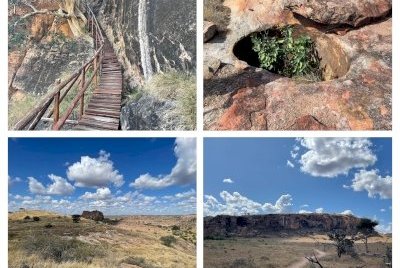
Mapungubwe National Park is located 5-6 hours of driving north of Jo’burg airport or 2 ½ hours north of Polokwane. Inside the national parks resides the world heritage site of Mapungubwe Cultural Landscape. The heritage site is just a small part of the park although the national park is not very big either.
The tracks leading to heritage site is open only to those who join the Heritage Tour which is at 7 in the morning and at 10. The park has a circular dirt ring road and the hill that is the centre of the heritage site can easily be seen from the road, but you must know what you are looking for (the correct one between several hills).
On the heritage tour a guide takes you in a park safari vehicle straight to the hill. When leaving the vehicle, he loads his gun and the takes you by foot to the foot of the hill and up. The entrance is by a wooden stairway which is placed in the same narrow gap as the ancient sacred passage is. On top there are numerous small remains and marks showing what once used to be the royal area of this kingdom. The guide is good and very intense. He knows his story and probably is somehow related to it. After a question from one of the two other people on the tour I understood that the guide’s his uncle has written a book about the site. The story …
Keep reading 0 comments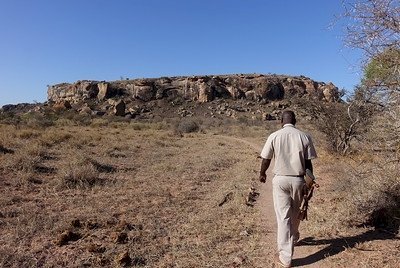
Mapungubwe Cultural Landscape lies at the northern border of South Africa, adjoining Botswana and Zimbabwe. This remote setting probably accounts for its low profile and limited visitor numbers, even among World Heritage Travellers (ranking 830th out of 1052). In the nomination file it was noted that although many WHS have to deal with high numbers of visitors, the sustainability of Mapungubwe is threatened by attracting too few of them.
What I found however was a well-cared-for National Park, worth anyone’s visit for a day or so. On my first two half-day trips into the park, I focused on game drives and brushed up my mammal list total: I saw mongoose, klipspringer, southern giraffe and steenbok for the first time. The park isn’t teeming with wildlife: there are no fences between the park and the adjoining zones in Botswana and Zimbabwe, so the animals migrate a lot between the three countries. Also, the density of mopane bushes makes it hard to see smaller animals. But especially the dramatic landscape, with lots of old baobab trees, ridges and canyons make the park attractive.
Mapungubwe was a large inland settlement that pre-dates the much better-known Great Zimbabwe. There’s a hint of Kernave to its story: the chief with his close allies lived in a palace on the hill, while the common people inhabited villages below. In its heyday in the 13th century, the society is believed to have consisted of 9,000 people. While large parts of the park can be explored …
Keep reading 0 comments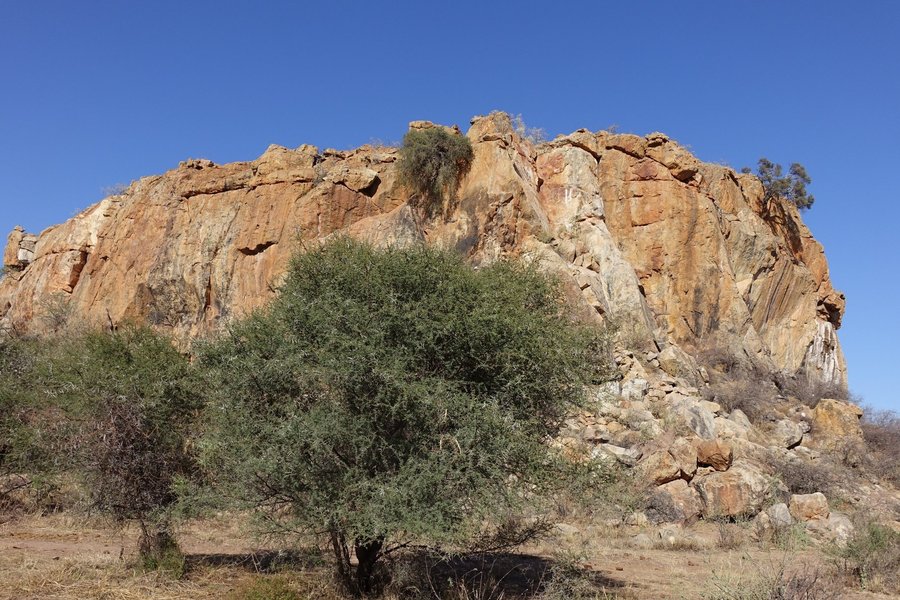
Though it is the nearest heritage site for me to visit, i find it more unbelievable that i am situated next to that place. Mapungubwe is an exciting place to visit because of its climate conditions, the natural well being, and environmental factors such as low pollution, absence of gaseous substances which affetcs the atmospheres. these factor makes the place a healthy site to visit, and even stay. the world did not make a mistake by honouring the place the world heritage site. its just 90 kilo away from me...as i am situated at musina.
Keep reading 0 comments
Mapungubwe is a special and sacred place, I have had the honor to go on top of the mountain several times and each time you discover something new about the amazing history, myths, legends and culture that lay hidden in the mountain.
It is great climbing up the mountain through the entrance that was once a long time ago a secret entrance hidden by a wild fig tree, its the only way to get on top of the mountain. There is a rope now but long ago there was none and the people who lived there were really clever and made a ladder by grinding holes into the rocks on opposite sides and putting sticks on each side. It great climbing up there (just wear the appropriate clothing}.
Keep reading 0 comments
